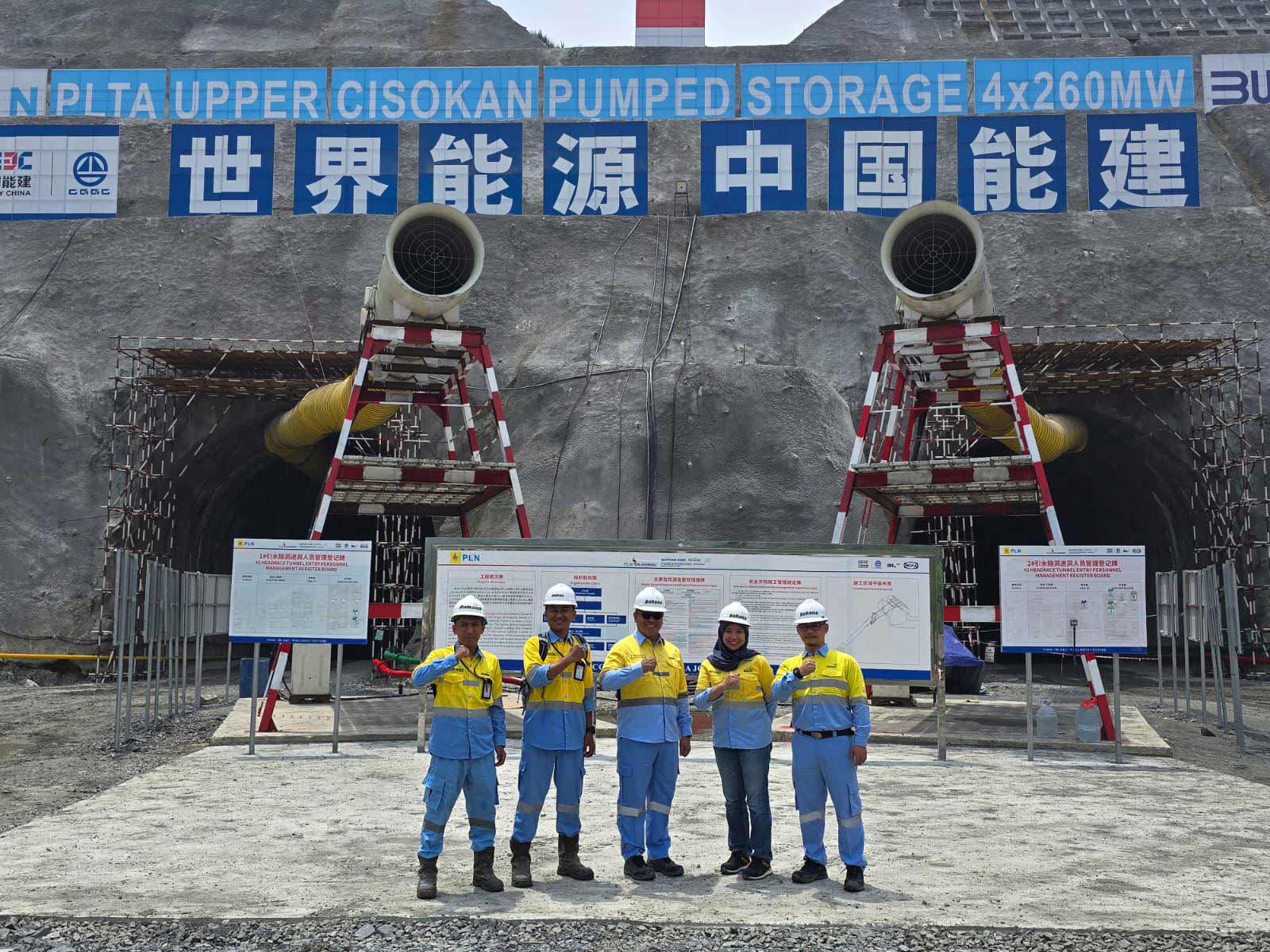Abdul Haris Atbaro, Dahana’s Director of Operations (OD), visited the Upper Cisokan Pumped Storage Hydroelectric Power Plant (PLTA) Dam project site on Tuesday, October 21, 2025 in West Bandung Regency. The purpose of the visit was to observe the progress of the blasting work first-hand and to express appreciation and motivation to all DAHANA employees engaged in this National Strategic Project (PSN), which is crucial for Indonesia’s energy security.
During his address to the employees, Mr Atbaro emphasized the importance of team performance at the Cisokan Dam site. He highlighted that this project not only demands high-level technical expertise but also serves as a benchmark for Dahana’s capabilities in managing large-scale energy infrastructure projects, particularly in underground blasting. The success of this project will further enhance the Company’s reputation as a leader in the explosives and integrated blasting services industry.
“I am here on behalf of management to express my deepest appreciation to all Dahana employees who have worked tirelessly. The dedication, professionalism, and fighting spirit of our workers in the field are key to the smooth execution of this project. Our team members represent Dahana on the front lines, and we take great pride in their performance,” stated Mr Atbaro.
The Upper Cisokan Pumped Storage of Hydroelectric Power Plant (PLTA) is a government initiative in the energy transition effort. This plant is designed to be the first and largest in Indonesia to utilize pumped storage technology, a sophisticated system that functions like a “giant battery” for storing electrical energy on a large scale.
With a total capacity of 1,040 Megawatts (MW), the Cisokan Hydroelectric Power Plant will play a vital role in maintaining the stability and reliability of the electricity supply, particularly during peak demand periods for the Java-Bali interconnection system. The project employs two dams or reservoirs at different elevations; water is pumped into the upper reservoir when electricity demand is low and released into the lower reservoir to drive turbines when demand is high.
The construction of this dam is a strategic step toward increasing the share of New and Renewable Energy (NRE) in the national energy portfolio. Its presence will not only reduce dependence on fossil fuel power plants but also significantly contribute to lowering greenhouse gas emissions, in line with Indonesia’s commitment to addressing global climate change.
This project is directly benefitted by the surrounding community; in addition to creating jobs during construction, the development of supporting infrastructure, such as access roads, has improved community mobility and lowered transportation costs for agricultural products. In the future, this dam also has the potential to become an ecotourism destination that can stimulate the local economy.
In closing, Mr Atbaro rekindled the team’s enthusiasm and reminded them to always adhere to Occupational Safety and Health (OSH) principles to achieve zero accidents throughout the project. He also stressed the importance of maintaining quality and standards of work at the Upper Cisokan Hydroelectric Power Plant.
“Keep maintaining unity, and most importantly, always prioritize Occupational Safety and Health (OSH). Never compromise on safety. Let’s complete this mandate with excellent results, with the right quality, and on time for Indonesia,” he concluded.



